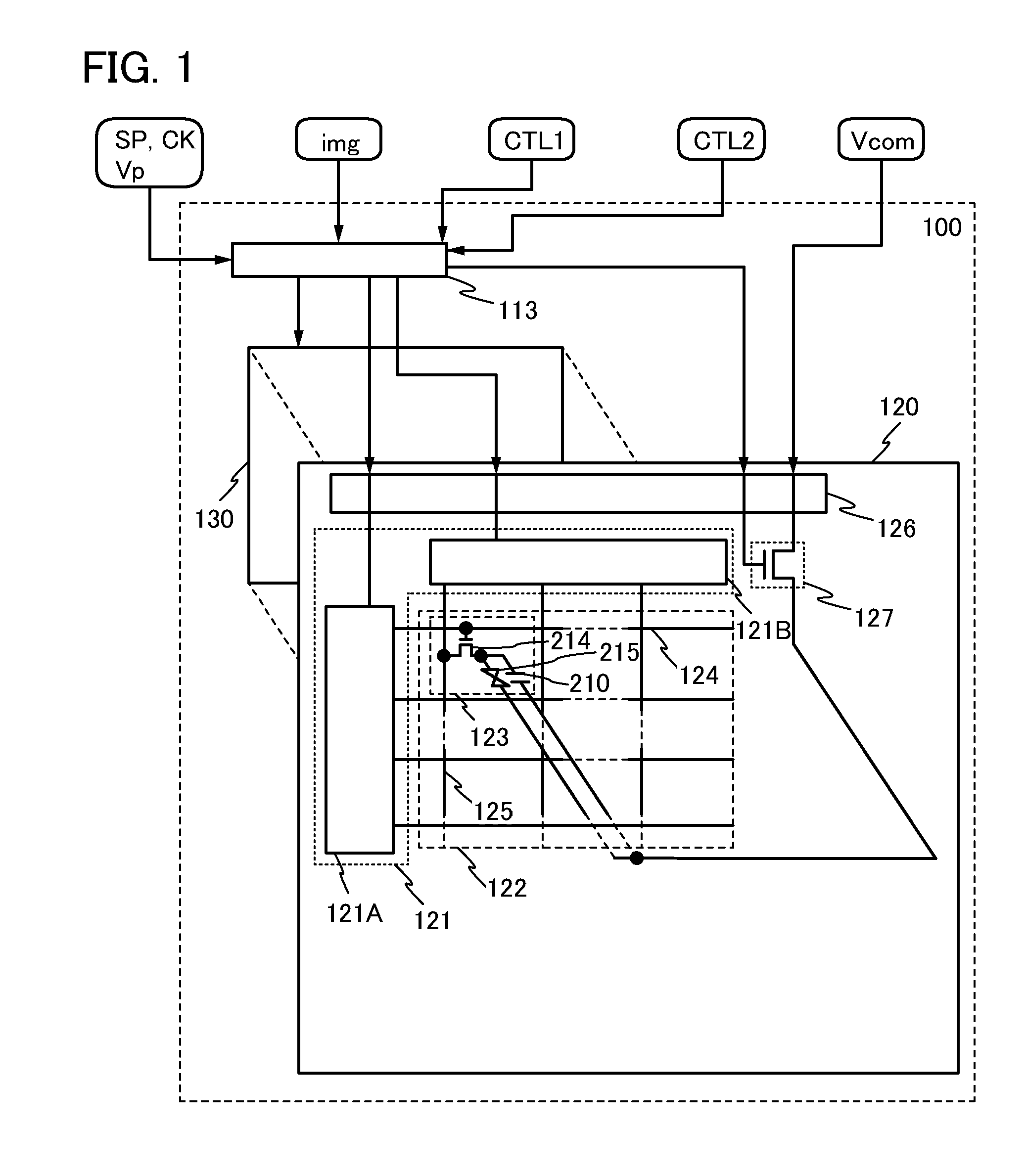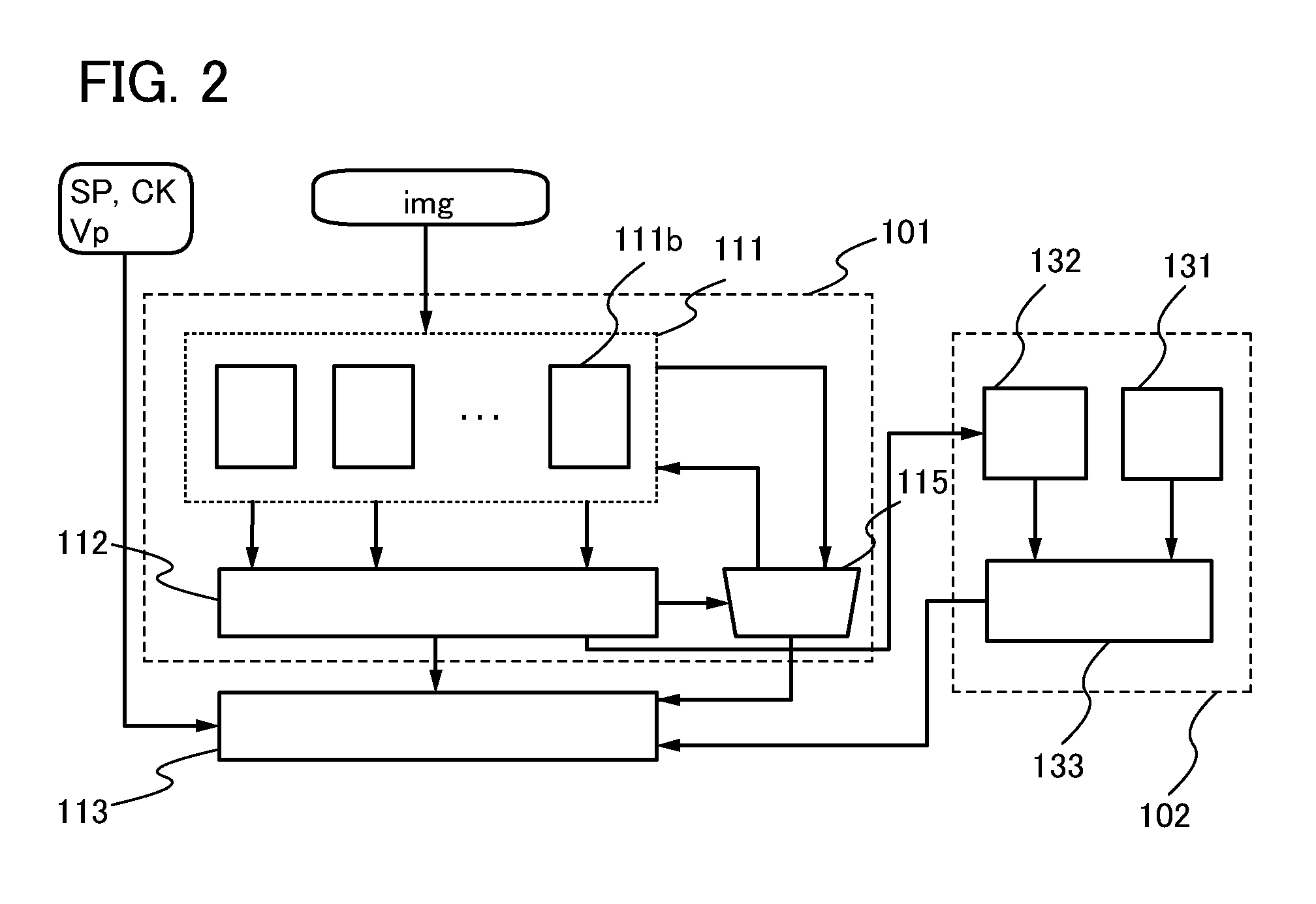Method for driving display device and liquid crystal display device
a display device and liquid crystal technology, applied in the direction of digital storage, instruments, computing, etc., can solve the problems of reducing the voltage applied to a liquid crystal element, affecting the display quality, so as to reduce the degradation of display quality and reduce power consumption at the time of displaying still images.
- Summary
- Abstract
- Description
- Claims
- Application Information
AI Technical Summary
Benefits of technology
Problems solved by technology
Method used
Image
Examples
embodiment 1
[0034]In this embodiment, a liquid crystal display device in which the timing to start or stop operation of a driver circuit is controlled in accordance with the ambient temperature will be described as an example of a display device.
[0035]First, an example of the structure of the liquid crystal display device of this embodiment will be described with reference to FIG. 1. FIG. 1 is a block diagram illustrating an example of the structure of a liquid crystal display device.
[0036]A liquid crystal display device 100 illustrated in FIG. 1 includes a display control circuit 113 in which output of a signal or voltage is controlled on the basis of a control signal CTL1 and a control signal CTL2, and a display panel 120 whose display operation is controlled by the display control circuit 113.
[0037]Note that the term “voltage” generally means a difference between potentials at two points (also referred to as a potential difference). However, in some cases, values of both a voltage and a pote...
embodiment 2
[0138]In this embodiment, an example of a shift register which can be used in a scan line driver circuit and a signal line driver circuit of the display device described in the above embodiment will be described.
[0139]An example of the structure of the shift register in this embodiment will be described with reference to FIGS. 8A to 8C. FIGS. 8A to 8C are diagrams illustrating an example of the structure of the shift register of this embodiment.
[0140]The shift register illustrated in FIG. 8A includes a first to N-th pulse output circuits 10—1 to 10_N (N is a natural number greater than or equal to 3).
[0141]Each of the first to N-th pulse output circuits 10—1 to 10_N includes a first input terminal 21, a second input terminal 22, a third input terminal 23, a fourth input terminal 24, a fifth input terminal 25, a first output terminal 26, and a second output terminal 27 (see FIG. 8B). The first input terminal 21, the second input terminal 22, and the third input terminal 23 of each on...
embodiment 3
[0170]In this embodiment, a transistor which can be used in the display device of the above embodiment will be described.
[0171]As the structure of the transistor which can be used in the display device of the above embodiment, a top-gate structure, a bottom-gate structure, and the like can be given, for example. Further, a staggered structure or a planar structure can be employed as the bottom-gate structure, for example.
[0172]The transistor described in the above embodiment may have a structure in which one channel formation region is formed (also referred to as a single-gate structure) or a structure in which a plurality of channel formation regions is formed (also referred to as a multi-gate structure). Alternatively, the transistor which can be used in the display device of the above embodiment may have a structure in which two gate electrode layers are provided over and below a channel formation region each with a gate insulating layer interposed therebetween (also referred to ...
PUM
 Login to View More
Login to View More Abstract
Description
Claims
Application Information
 Login to View More
Login to View More - R&D
- Intellectual Property
- Life Sciences
- Materials
- Tech Scout
- Unparalleled Data Quality
- Higher Quality Content
- 60% Fewer Hallucinations
Browse by: Latest US Patents, China's latest patents, Technical Efficacy Thesaurus, Application Domain, Technology Topic, Popular Technical Reports.
© 2025 PatSnap. All rights reserved.Legal|Privacy policy|Modern Slavery Act Transparency Statement|Sitemap|About US| Contact US: help@patsnap.com



